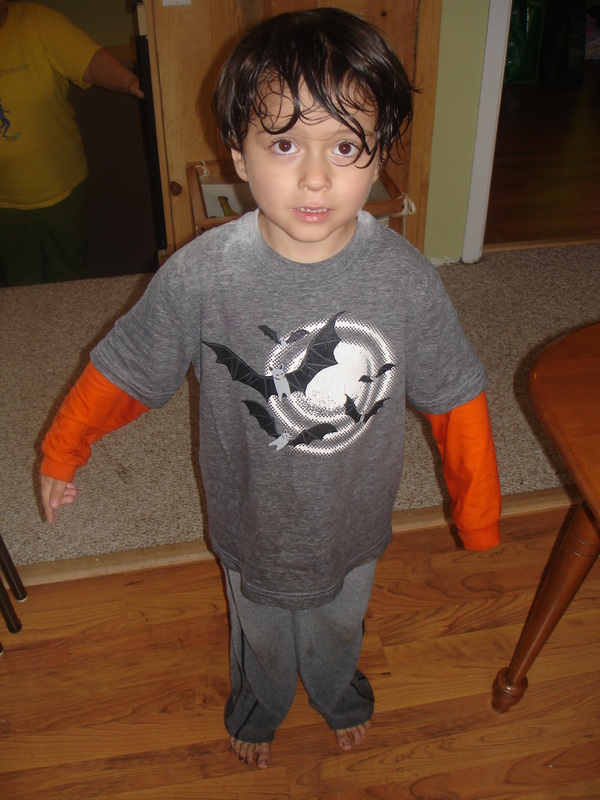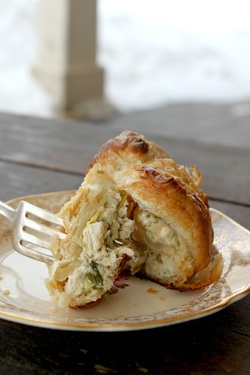|
People often think that children with autism are fearless because of the crazy dangerous things they will do such as running out in front of cars, or jumping down from the top of a playground set instead of taking the slide down. My son with autism once climbed up the outside netting/tubing of an indoor playground (the netting around this playground was there because the top of the playing equipment went as high as the ceiling). Yet, that same day he ran away screaming from a butterfly that flew past him..... So, why is there such fear in surprising things (like butterflies), and no fear where others see something to fear? Part of the answer is that many children with autism are not fully aware of their surroundings. A quiet, beautiful butterfly to me might be a scary faced, noisy wing flapping medieval creature to my son who is more sensitive to sights and sounds than I am. They also have difficulty with body awareness (the relation of themselves to their environment). So, if I stood at the top of a steep hill, I would understand that if I ran down it too fast, I would likely end up toppling down, so I might choose to simply walk instead. However, a child with autism only sees the hill, and looses their understanding of themselves, and might just start running down and letting the gravity and angle of the hill take them, until they are falling. The other answer to the question of why children with autism are so afraid of some things and not others is an underdeveloped sense of danger. In the brain, the amygdala plays an important role of processing of memory and emotional reactions, that includes fear. Research has been done that indicates this part of the brain in children with autism is often under-developed. The amygdala would generally learn what is dangerous, remember that dangerous thing, recognize it when it sees it again, and figures out what to do about it. So, understanding how the amygdala is involved with fear responses helps explain how an autistic child could run and jump off a dock into a lake without a thought, but run and hide when the micro-wave beeps. The amygdala is having trouble accurately identifying and remembering the things that should be threats in their environment. Children without autism learn about danger by hurting themselves, being verbally scolded, thinking ahead and imagining a bad outcome or recognizing signs of fear in their body (like a racing or thumping heart, or sweating). But cause and effect, language and communication, imagination and prediction, sensing and interpreting feedback from their bodies are all things children with autism struggle with. So, some dangers might just never get identified as dangerous at all. Caleb literally jumped into lakes and pools again and again (and again....) as a child. Yes, we were watching him, but he was a fast little bugger when he was younger, and his sense of (real) danger was non-existent. We have had to teach him by reinforcement and rewards what is truly dangerous, and what is not.
He is learning, and getting more mature (as mature as any 9 year old regarding danger!), and I honestly have faith in him and what he is capable of doing and remembering. He knows now (finally!) not to run into water without a life jacket, or an adult present (he's getting to be a good swimmer), though he does still run away screaming when he sees a butterfly.... (he actually calls them "dragon-butterflies"). As "normal" people we tend not to notice many of the dangers around us because we assume our brains (our natural defence) will tell us when there is danger. Sometimes it's easy to forget what those dangers are, and to assume that kids will naturally avoid the things that we know to be scary or threatening. Things I've learned while raising my son with autism, and what I think all caregivers, or people who know a child with autism can keep in mind are: Teach specific rules about what they can and cannot do. Make social stories about things that are dangerous and ways they can stay safe. Explain (and explain) why things are dangerous and what could happen to them in a dangerous situation. Lastly, don’t assume that the child will naturally avoid things that you consider dangerous; just be ready to have that child get into harmful situations that other children would avoid due to fear.
4 Comments
Angela
8/31/2015 10:59:29 am
Thank you so much for your blog. Last night my 11 year old nephew put a plastic bag around his neck, tied it and pulled until he passed out. Some people found him on the sidewalk outside of the house. Sorry to be so graphic, but even as I type I am in dis-belief.
Reply
10/14/2020 10:34:22 pm
You made a good point that knowing how to teach what a kid can and cannot do is one way to be a parent to a child with autism. My neighbor has a toddler with autism and I'd like to make sure that I know how to interact with her especially when she grows older. Learning more about autism awareness would be something I should look into.
Reply
4/28/2023 10:58:29 am
Halotestin Siparişi Ver: Anabolic Kapında Halotestin
Reply
Leave a Reply. |
Hi, I'm Amy-Lyn! I am the lady behind this here blog! I live in the sticks with my animals, my super handsome husband, and my
3 amazing kids! Here you'll find things from recipes (gluten-free, paleo, and strait up junk food!), DIY ideas, thoughts on raising a son with autism, and whatever else pops into my brain! : ) Read more about me by clicking here! Want to Stay Connected?
Find What
|




 RSS Feed
RSS Feed







